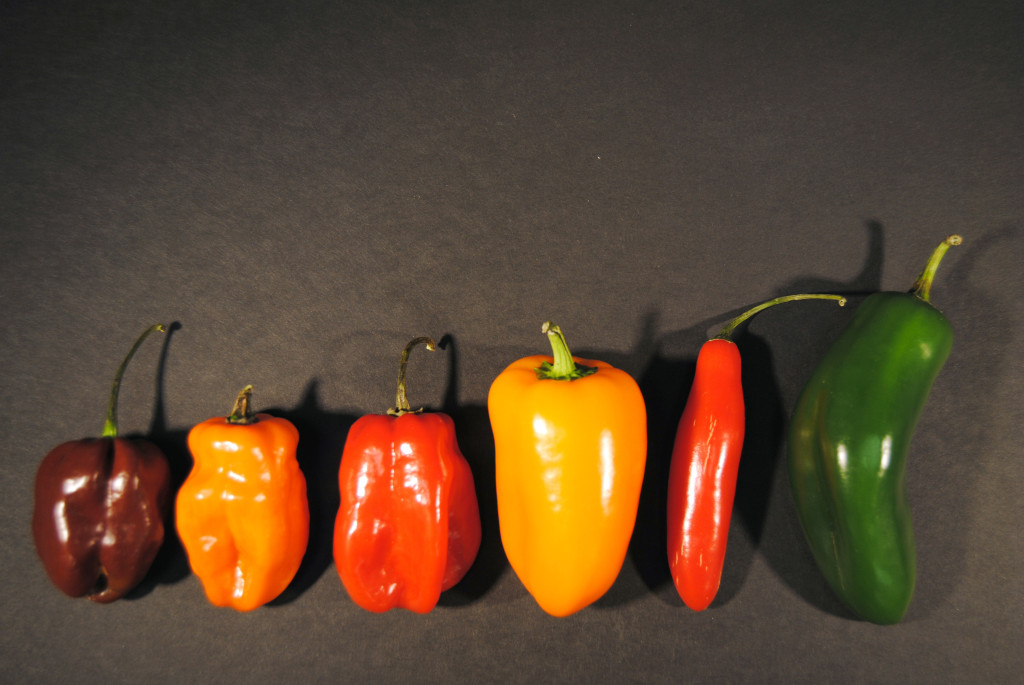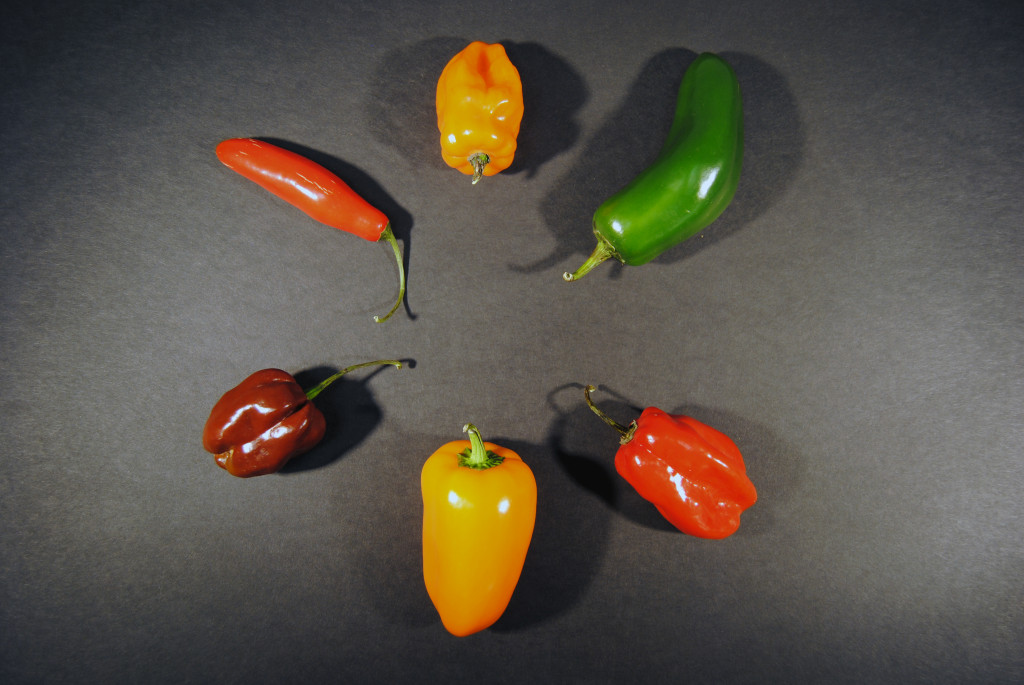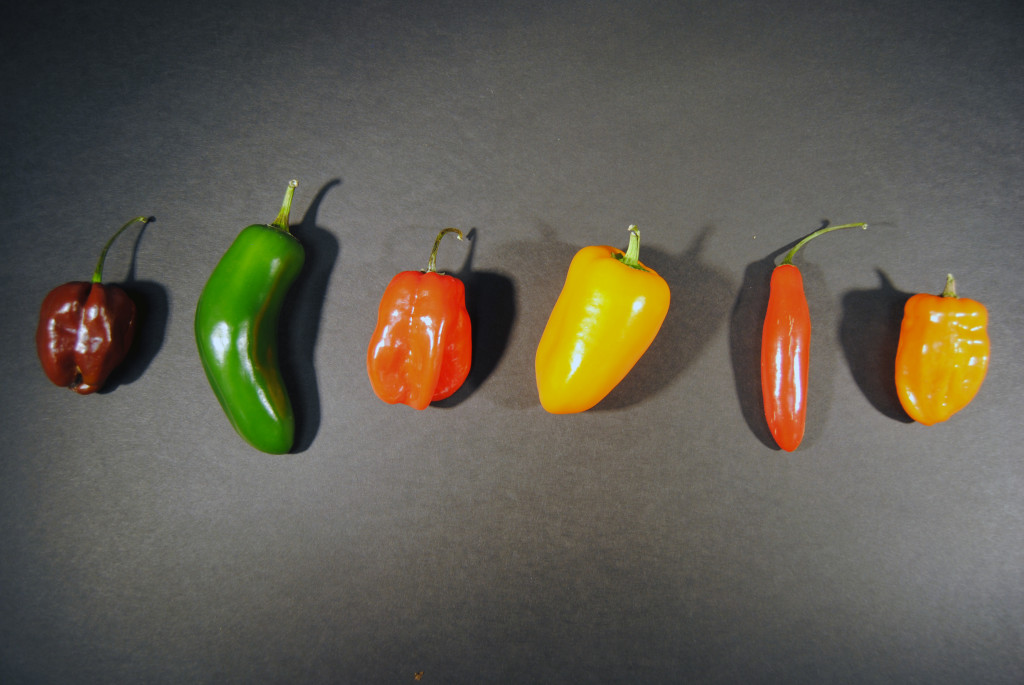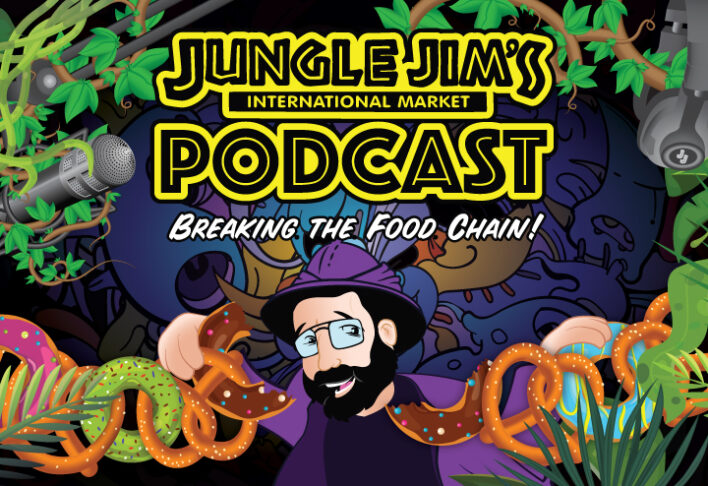
The Foodie Press: Capsaicin
Back to feed- Posted: 9/12/2016
- Categories: Discoveries at the Jungle
The short version: It’s the natural compound that gives chili peppers their heat. It’s concentrated around the seeds of the chili, so pulling out the seeds and fibrous membrane surrounding them will cut down on most of the spiciness. Usually. The higher the concentration of capsaicin, the hotter the pepper. But you already knew that, right?
The not so short (but still relatively short) version? It’s a little more complicated than that. So strap in. Let’s science…
Either you can handle the heat, or you stay out of the kitchen… Or something along those lines. The world of spicy foods, of which capsaicin-centered commodities are the foundation of so many fiery empires, is vast, weird, and surprisingly complex. And it is certainly not for the faint of heart. Some cultures – in Eastern Asia, like Thailand and Vietnam, or Central Asia, like India – utilize chili peppers in many aspects of their cooking, both for the actual flavor and for the heat. An argument can be made for the medicinal qualities of chili peppers (and more specifically, capsaicin), as well. It’s simply a part of life. But in the states, chili peppers have become something else entirely.
Hot sauces, hybrid peppers, contests and challenges – all of these test the limits of our tolerance for capsaicin-induced pain. But how? The chemical makeup of capsaicin is well documented and understood. It’s genuinely surprising how much actual science has gone into not just understanding why capsaicin does it what it does, but also why we’re okay with it – or, in some cases, maybe even addicted to it.
No Pain, No… Gain?
So, why does capsaicin cause so much… discomfort? Some theorize that it’s an evolutionary reaction that’s meant to help chili peppers continue their existence. As various birds eat the insides of the peppers – because, genetically speaking, many of them have no reaction whatsoever to capsaicin – they can’t digest the seeds, but instead help them to germinate, thus taking part in the circle of life. But humans and other mammals? We’ve provided no benefit to chili peppers, so capsaicin is their defense mechanism. It’s a remarkably human-centric theory, and one that’s completely unverified, so there’s no way to know if that’s actually the case. We also admit to finding it incredibly humorous.
Scientifically speaking, our chemical interactions (“ours,” as in mammals) with capsaicin are what cause the heat-like pain. And we say “heat-like,” because it’s a chemical reaction that simulates what it feels like to be burned. It is quite literally a mind-trick of sorts. That’s not to say there’s no danger in eating a particularly volatile variety, but you won’t sustain an actual burn. However, because this is a chemical reaction – the capsaicin compound attaches itself to nerve receptors and triggers the sensation – we end up feeling like we’ve just had a run in with the business end of a flamethrower without any real, readily apparent physical signs (aside from sweat, tears, and a red face, of course). As with anything to do with chemistry and biology, remember that everyone’s tolerance is different. And though you can cause some temporary, shall we say, disruptions in how those particular nerves and receptors function – over stimulating any one thing is a stress on our bodies – there’s not too much worry about any kind of permanent damage. There’s more and more evidence that eating moderately spicy foods is actually a boon to overall health, actually.
Even though hot peppers of the Capsicum family have been found to have been used for thousands of years now, it’s only in the last couple of hundred – and really, in the last few decades – that it’s become the American cultural phenomenon we know it as today. From the Scoville Heat Index, to the rapid hybridization of hotter and hotter pepper varieties, to the far-reaching, tongue-tingling world of thousands upon thousands of hot sauces, our Capsaicin-crazed tastebuds are far from reaching their limit.
We’ll have more on Adventures at the Jungle about hot sauces, chili peppers, and all of the spicy things we find at Jungle Jim’s in the near future, so check back soon. In the meantime, tell us about your favorite hot sauce or chili pepper application below!





